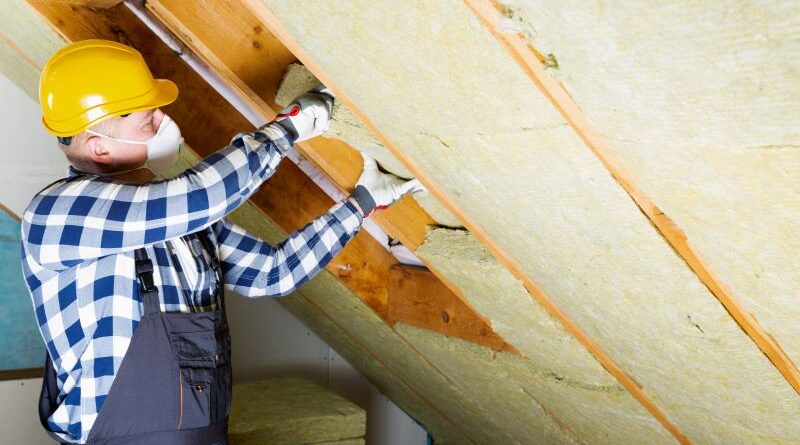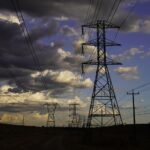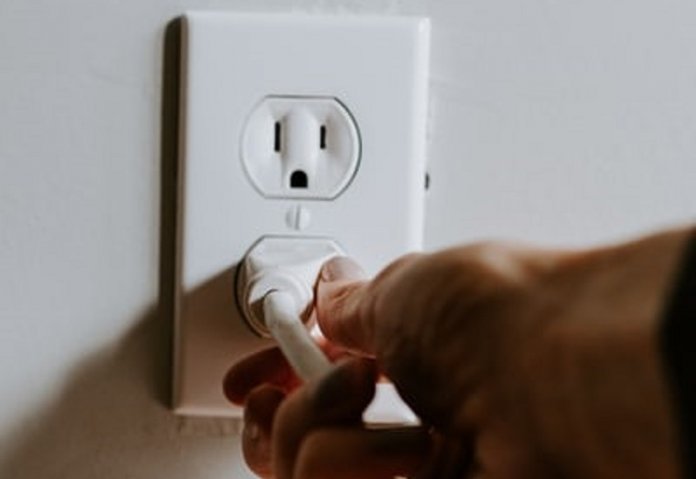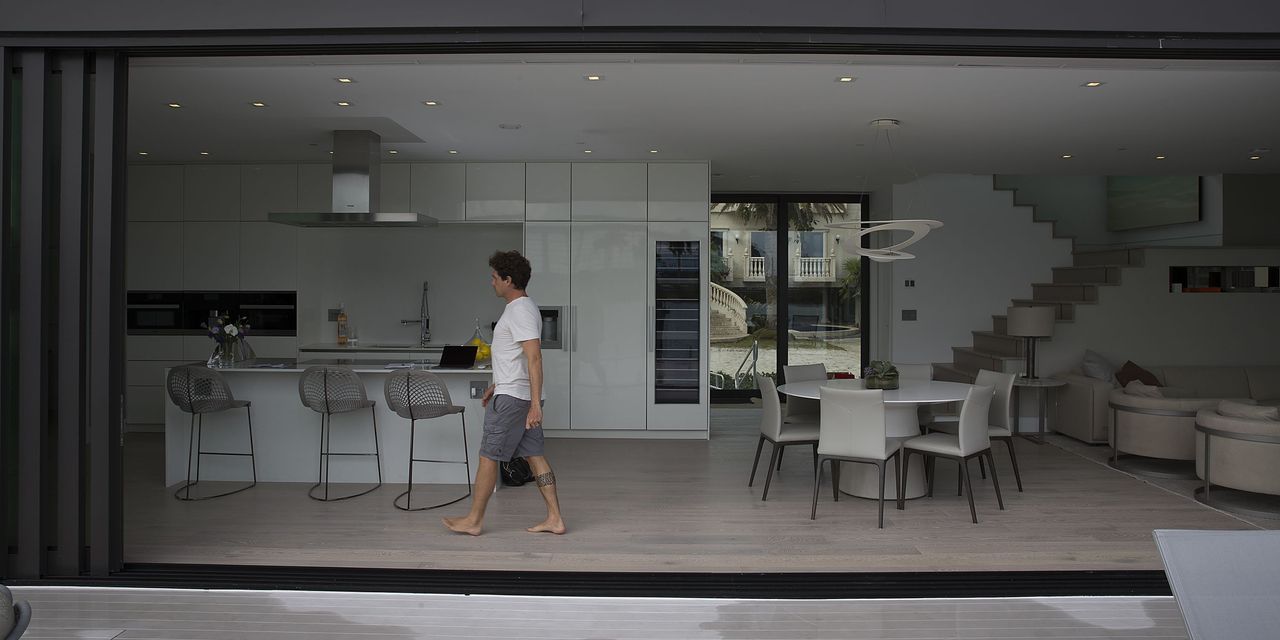Where To Find Affordable Financing for Energy-Efficiency Upgrades – Earth911.com
Energy Disrupter
More people are motivated to make energy-efficiency upgrades in their homes. Unfortunately, the cost of upgrades can discourage consumers — even when the long-term savings will justify the initial expense. A new generation of financing options is available to help make your energy transition.
Thanks to the Inflation Reduction Act of 2022 (IRA), qualified homeowners can use financial incentives that make energy-efficiency improvements more affordable. Take a few minutes to find energy-efficiency financing options, which are often available from local as well as state and federal programs.
Your Home Town
Across the nation, thousands of municipalities – cities, towns, counties, parishes, Tribal territories, or other regional areas – provide housing assistance and support services to the people who live in the community. They may offer a funding program to help homeowners cover the cost of repairs, property improvements, accessibility features, or energy-efficient measures such as insulation, weatherization, window replacement, heating, cooling, and water efficiency.
Homeowners can contact their municipality’s housing department generally to find community lending initiatives. Homeowners may qualify for grants, which are free, or low-interest rate loans for certain repairs and improvements. There are also payment assistance funds available for some first-time homebuyers.
Grants tend to focus on urgent upgrades. For example, your city may offer grants to help remove asbestos or lead paint, mitigate radon or carbon monoxide, or make necessary repairs following a weather-related disaster. Additional incentives may be available to seniors, veterans and their qualified spouses, and to households that include a person with a disability.
It’s always good to know what your town is giving back to its community. Visit your town hall to inquire about financial assistance to homeowners, or Google your way through the town’s website. Loan amounts may be small—but can be a good start for DIY projects such as air sealing or insulation.

Your State Housing Finance Agency
Every state in the U.S. has a state-chartered Housing Finance Agency. Known as HFAs, these authorities help finance the purchase and rehabilitation of affordable homes for people living in their state. HFAs use housing bonds to develop and administer mortgage programs tailored to the state’s demographics, housing characteristics, and consumer affordability. Many HFAs partner with the federal enterprises Fannie Mae and Freddie Mac to offer the energy-efficient mortgage programs discussed further in this article.
A growing number of HFAs offer financing programs to help pay for energy improvements or to install renewable energy or energy-efficient system, such as a heat pump or solar panels and batteries. The examples below illustrate a variety of green loan programs and incentives. If you don’t see your state, visit the National Council of State Housing Agencies (NCSHA) to find your state’s options.
Alaska
Alaska Housing Finance Agency offers Energy-Efficient Interest Rate Reduction loans. Borrowers receive incremental interest rate reductions based on their home’s energy rating. The agency also provides loans for renovation, weatherization, and down payment assistance of up to 4% of the purchase price to help cover the down payment or closing costs.
Connecticut
Connecticut Green Bank administers the Smart-E Loan program, a low-interest loan to cover the cost of more than 40 types of energy improvement projects. Under the Energize Connecticut program, homeowners can get energy assessments, find rebates, and explore other incentives available to them.
Idaho
Idaho Governor’s Office of Energy and Mineral Resources offers low-interest loans of up to $50,000 to help homeowners cover the cost of renewable energy projects, HVAC upgrades, windows, insulation, weatherization, and more.
Maine
Maine State Housing Authority offers a range of programs to help homeowners pay for central heating improvement, weatherization, water assistance, repairs, accessibility, and more. Efficiency Maine offers many financial incentives as well as discounted interest rates on loans up to $15,000, with no maximum income restrictions.
Maryland
Maryland Energy Administration offers loans up to $30,000 for homeowners under the Be Smart energy-efficiency loan program. Borrowers can use the funds for a range of efficiency measures, including a limited amount toward the purchase and installation of solar photovoltaic systems.
New Hampshire
New Hampshire Housing offers a Purchase/Rehab program, through which homebuyers can add an additional $33,000 to their mortgage to cover the cost of repairs and upgrades. Financing may be combined with Home Flex Plus, which provides cash assistance toward the down payment and closing costs.
New Mexico
The New Mexico Mortgage Financing Authority, also known as Housing New Mexico, offers several programs for home repair and energy efficiency subject to income and loan limits based on property location.
New York
New York State Energy Research and Development Authority offers loans through Energy Finance Solutions. Options for homeowners include several Residential Financing Programs, such as the Assisted Home Performance with Energy Star.
Nevada
Nevada Home Energy Retrofit Opportunities for Seniors (HEROS) is a partnership between the Governor’s office and Nevada Housing Division. The program covers a range of energy-efficiency improvements and is free to income-qualified homeowners over the age of 60.
Pennsylvania
Pennsylvania Housing Finance Agency offers loans up to $10,000 at 1% interest for 10-year terms under its Home Energy Efficient Loan Program to cover the cost HVAC upgrades, roof repair, and other energy-efficiency improvements. Income restrictions are based on household size.
Texas
Texas Department of Housing and Community Affairs offers down payment assistance and financing incentives under its Texas Homebuyer program, as well as financial assistance to homeowners for weatherization, home repair, and energy efficiency.
Washington
Washington State Housing Finance Commission offers a 0.25% interest rate reduction on an energy-efficient home purchase or renovation loan under its Energy Spark program. Loans are available to borrowers with a credit score of 620 or above and an annual income of less than $180,000. Homebuyers may also be eligible for down payment assistance funds at as low as 0% interest.

Your Utility Company
Just about every utility company offers special promotions and other incentives to its customers. You’ll often find rebates on appliances, discounted installation services for HVAC equipment, water heaters, and heat pumps—to name a few. Some utilities offer free home energy assessments, or the inspection free is refunded from the cost of efficiency measures recommended in the energy report.
On-bill financing is an option for homeowners to finance the cost of an energy upgrade, where loans are repaid through your utility bill. Funding from such programs may be provided by a third-party finance entity and administered by the utility company.
The Green Button Program is a national initiative that provides utility customers a user-friendly way to track energy usage. Look for the Green Button program or other energy-saving tools on your utility website. This is where you will likely find retrofit loans, on-bill financing, or other financing incentives. No matter what type of appliance purchase or upgrade project you’re considering, check out the Energy Star Rebate Finder to make sure you’re not leaving any money on the table.
Property Assessed Clean Energy (PACE) Loans
Property Assessed Clean Energy (PACE) is a national initiative currently available in 38 states that was created to help residential and commercial property owners finance energy-efficient improvements. Individual states must adopt the PACE program as legislature, and programs are funded through municipal bonds. Once adopted by the state, local municipalities (city, town, or county) are then able to implement residential or commercial programs that align with the local needs of the community. Sometimes, nonprofit corporations serve as intermediary administrators of a PACE program.
A unique feature is that PACE loans are attached to the property—not the homeowner. Instead of paying a bank or mortgage lender, loans are repaid through the borrowers’ property tax bill, generally over 20 years.
PaceNation is a national nonprofit association that advocates for PACE financing. You can search for programs in your state on the PACE Program Map. When you use the map, hover over any state to view a brief summary, or click to obtain a detailed listing of local programs and resources. As an example, the state of Florida lists 14 financial entities, along with links to their websites.
If you refinance your mortgage, the lender may require the PACE loan to be paid off, usually through the proceeds of the new loan. Your loan agreement may include a provision that the loan may be transferable to a new owner, should you decide to sell your house.
PACE financing in Canada is also available and adopted as a provincial economic development initiative. Canadians living in Alberta, British Columbia, and Ontario have access to locally authorized PACE financing.
Energy-Efficiency Mortgages
Conventional and government-insured energy-efficient mortgages have favorable qualifying rules that take into account the borrowers’ projected savings in energy costs and maintenance. The Fannie Mae HomeStyle Energy program and the Freddie Mac GreenCHOICE Mortgage are both structured to allow financing up to 15% of the “as-completed value.”
Please be aware that the term as-completed is used by mortgage lenders when renovation costs are financed with the mortgage. Although the work is completed after the closing, loan approval is based on what the home will be worth after the energy improvements are completed.
How Green Mortgages Work in 5 Steps
- If you are refinancing, research the estimated fair market value of your home, and obtain the current balance owed on your mortgage. You will need to include any secondary liens, such as a home equity line of credit, when applying.
If you are purchasing a home, obtain a written acceptance from the seller for the agreed-upon purchase price. Your lender will need this information as a basis to get started.
- Order a home energy assessment from RESNET (HERS), the U.S. Department of Energy, or other lender-endorsed energy rating company.
- Obtain written estimates from a home improvement contractor and/or renewable energy installer. Estimates need to include a general description of each efficiency measure.
- Provide a copy of the work estimate and energy audit report to your mortgage lender. Your lender will forward these documents to the property appraiser.
- At closing, your lender will set aside funds to pay the contractor directly. For new purchases, the seller receives the original agreed-upon price, but the closing transaction documents will reflect the appraiser’s final as-completed value.


Depending upon the extent of improvements, your mortgage lender may request an additional report known as the Residential Energy Efficient Addendum. If required, your lender will need to provide the addendum to the appraiser prior to the home inspection.
Your lender will pay contractors and/or renewable energy installers directly. Typically, the first disbursement is made at closing, and final payments are made after the appraiser (or lender representative) inspects the home to confirm work is completed in accordance with the agreement and building code.
Conventional Mortgage Programs
Freddie Mac’s GreenCHOICE Mortgage is available for purchase and refinance transactions on one-to-four family homes, condominiums, and manufactured homes. Borrowers can finance up to 15% of the as-completed value of the property to cover the cost of energy improvements. No energy report is required for improvements that cost $6,500 or less.
Fannie Mae’s HomeStyle Energy Mortgage is available for purchase and refinance transactions on one-to-four family homes, manufactured homes, second homes, and investment properties. You can finance up to 15% of the as-completed value. No energy report is needed for improvements that cost less than $3,500 or for certain qualified improvements.
FHA Energy Efficient Mortgages
FHA Energy-Efficient Mortgages are available on both purchase and refinance transactions. FHA has expanded mortgage qualifying rules due to the savings resulting from the energy improvements. You will need to get a home energy assessment unless the costs are $3,500 or less for basic weatherization. The minimum down payment is 3.5% based on the as-completed value, referred to as adjusted value by the FHA.
The steps and procedures for an FHA energy-efficient loan are similar to conventional loans, however, the computations work differently. How much of your improvement costs can be financed will vary as a result. Approved FHA Lenders can provide you with an estimate based on your loan limits and median sales price values in your Metropolitan Statistical Area (MSA). The example below illustrates how the computations work, and you can find detailed explanations in the book, Live in a Home that Pays You Back.

VA Mortgages
The U.S. Department of Veterans Affairs offers residential mortgages to military servicemembers, veterans, and surviving spouses that can be used to make up to $6,000 in energy efficiency improvements. Improvements may include, but are not limited to, solar-powered heating, cooling, and water systems; insulation; storm windows and doors; weatherproofing; heat pumps; and furnace upgrades.
VA loans require no down payment, and borrowers can generally finance most closing costs. In addition, financing can include the cost of energy improvements, and financing is available on purchase and refinance transactions.
VA loans can be increased up to $6,000 based on the documented costs of an energy audit or up to $3,000 with no audit. It’s important to keep in mind that the extra monthly mortgage payment cannot exceed the estimated reduction in monthly utility costs.
USDA Rural Housing
USDA Rural Housing, administered by the U.S. Department of Agriculture (USDA), offers grants and loan programs to help homeowners make repairs and cover the cost of energy-efficient improvements. Rural Housing loans have eligibility guidelines pertaining to household income and area home values. Programs are summarized in the Rural Housing Fact Sheet.
If you’re not sure your home is located in a designated rural housing location—or you’re looking to buy a home—you can find helpful information, tools, and calculators on the USDA Property and Income Eligibility website (click “Accept” to enter the site). Using the flash map, you can drop a pin on any location to explore opportunities.
You may be eligible for expanded loan qualification based on the potential savings in utility costs. To find out if energy-efficient mortgages are available in your area, you can view the current Participating Lender list for your state, or contact the Rural Housing State Office.
 About the Author
About the Author
Anna DeSimone is author of Live in a Home that Pays You Back, A Complete Guide to Net Zero and Energy Efficient Homes, which features a resource directory of incentives for every U.S. state and Canadian Province.

















